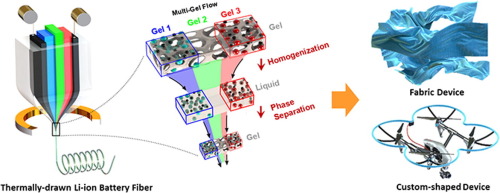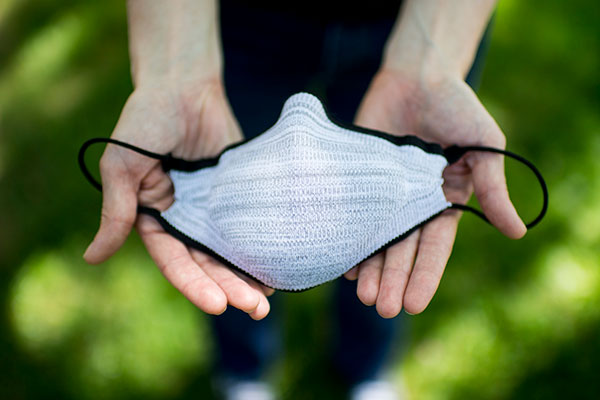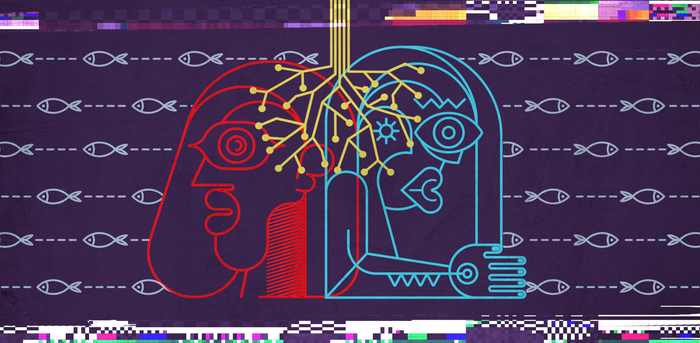Dec
21
2021
 Technophiles talk a lot about batteries because they are so essential to our electrified and green future. By historical standards we have cheap and powerful batteries today, but because they are so critical to our technological infrastructure, any way they can be incrementally advanced is welcome, and some advances may be game-changers. While there is a lot of focus on energy density (energy storage per volume) and specific energy (energy storage per mass), many other features are important to overall battery utility. One we do not often speak about is the shape of the battery, or the ability to take on a variety of shapes. I have a feeling we might be talking about this feature more in the future.
Technophiles talk a lot about batteries because they are so essential to our electrified and green future. By historical standards we have cheap and powerful batteries today, but because they are so critical to our technological infrastructure, any way they can be incrementally advanced is welcome, and some advances may be game-changers. While there is a lot of focus on energy density (energy storage per volume) and specific energy (energy storage per mass), many other features are important to overall battery utility. One we do not often speak about is the shape of the battery, or the ability to take on a variety of shapes. I have a feeling we might be talking about this feature more in the future.
Imagine, if you will, a car that does not contain a large battery, it is a large battery. The structural components themselves double as battery storage. The same can be true for any part of your house, the casing of a laptop computer, or the structure of any electronic device, like a cell phone. Further, if batteries could be made into very thin fibers, then they could be woven into any shape. They could be thin, flexible, and woven into fabrics.
That is exactly what a team from MIT has accomplished. They created a process by which a lithium-ion battery can be stretched into a thin fiber, while maintaining the structural arrangement and integrity of all of its components. The battery fiber can then be coated in a protective material, making it waterproof. The authors write:
Here, we present a Li-ion battery fiber, fabricated for the first time using a thermal drawing method which occurs with simultaneous flows of multiple complex electroactive gels, particles, and polymers within protective flexible cladding. This top-down approach allows for the production of fully-functional and arbitrarily long lithium-ion fiber batteries. The continuous 140 m fiber battery demonstrates a discharge capacity of ∼123 mAh and discharge energy of ∼217 mWh.
Continue Reading »
Dec
20
2021
 Spanish company Nueva Pescanova is close to opening a commercial octopus farm in the Canary Islands. The purpose of this farm is to raise octopuses (and yes, that is an acceptable plural) for food, sparking another round in the debate over the ethics of raising animals for food. This also comes on the heels of the UK adding the octopus to the list of “sentient” animals, garnering for them certain legal protections. This is a good opportunity to discuss what sentience means and ethics of eating animals.
Spanish company Nueva Pescanova is close to opening a commercial octopus farm in the Canary Islands. The purpose of this farm is to raise octopuses (and yes, that is an acceptable plural) for food, sparking another round in the debate over the ethics of raising animals for food. This also comes on the heels of the UK adding the octopus to the list of “sentient” animals, garnering for them certain legal protections. This is a good opportunity to discuss what sentience means and ethics of eating animals.
Consciousness as a phenomenon of living things is a continuum, with things like bacteria, algae, and fungi at one end of the spectrum and humans at the other (humans are objectively the most encephalized or sapient species on Earth). Nowhere along this continuum are there any sharp demarcation lines. Therefore, as humans develop an ethical and moral philosophy for how we should treat each other, the obvious question becomes – to what extent should our ethical philosophy apply to other living things?
First we need to dispense with the extremist position that all life is equally deserving of dignity, respect, autonomy, and all the ethical considerations that flow from these principles. This is an unworkable position, and also does not stand up to close scrutiny. First, all living things exist to some extent in competition with each other. No living thing affords all other living things equal respect. If someone is infected with bacteria, those bacteria may very well kill them (after subjecting them to a horrible illness). Taking antibiotics is mass bacterial murder. Insects are definitely a step up from single-celled creatures, having a primitive neural algorithm that determines their behavior. And sometimes we need to control the population of insects as they try to eat our food, spread infections, destroy our homes, or otherwise be pests.
At the other end of the spectrum there are chimpanzees, our closest cousins, and the other great apes. They clearly have a highly sophisticated central nervous system. They can experience grief, have personalities, can plan ahead, and communicate. Because they are closely related to us, we have an easy time understanding that they are intelligent creatures who deserve to also be treated with dignity and respect. Still, this does not mean the same thing as for humans. Chimpanzees do not deserve the right to vote, or be held criminally accountable for their behavior or enter into a legal contract. While very close to humans, chimps have some obvious limits. There is a solid case to be made, however, that chimps should not be farmed for food or subjected to cruel experiments. They are intelligent sensitive creatures and should not be made to suffer at the hands of humans.
Continue Reading »
Dec
16
2021
 The COVID-19 pandemic is not done with us yet. We are still in the middle of the delta surge, and while delta will eventually pass, the omicron variant is right on its heels. In the US we just passed the milestone of 800,000 people dead from COVID with over 50 million cases. More Americans died of COVID in 2021 than in 2020, although in 2021 most deaths were among the unvaccinated. The vaccines remain our best defense against this pandemic, which is why it is tragic that there are still holdouts for tribal or ideological reasons. Regardless, it is extremely likely that we will be dealing with COVID through 2022. It is also likely that COVID is now endemic, and while it may fade down to flu-like proportions, we will also very likely have to deal with it for years to come. COVID is also likely not the last respiratory pandemic we will have to deal with this century.
The COVID-19 pandemic is not done with us yet. We are still in the middle of the delta surge, and while delta will eventually pass, the omicron variant is right on its heels. In the US we just passed the milestone of 800,000 people dead from COVID with over 50 million cases. More Americans died of COVID in 2021 than in 2020, although in 2021 most deaths were among the unvaccinated. The vaccines remain our best defense against this pandemic, which is why it is tragic that there are still holdouts for tribal or ideological reasons. Regardless, it is extremely likely that we will be dealing with COVID through 2022. It is also likely that COVID is now endemic, and while it may fade down to flu-like proportions, we will also very likely have to deal with it for years to come. COVID is also likely not the last respiratory pandemic we will have to deal with this century.
All of this is why masks are still important. We just have to accept the fact that face masks are now an important part of life. At least for the foreseeable future we will need face masks as a layer of protection in health care settings, large indoor crowds, among vulnerable populations, and for anyone who is symptomatic. Walking around in the public maskless, sneezing and coughing from a “cold” is no longer socially acceptable. If you want to avoid the mask in small or outdoor crowds and in gatherings of family and friends, then get fully vaccinated. But even then, there are some situations where masks provide an extra needed layer of protection.
There are at least two important questions relating to mask wearing. The first is – do they really work? The short answer is yes, they do. But obviously there is some complexity here. When worn properly, and in the right setting, masks provide a measurable level of protection from a respiratory infection. They protect you and they protect others. The latest evidence to support this conclusion looked at countries with and without face mask policies. They found:
Average COVID-19 mortality per million was 288.54 in countries without face mask policies and 48.40 in countries with face mask policies.
Continue Reading »
Dec
14
2021
 I love the fact that three years ago no one would have any idea what the title of this post meant, and now pretty much everyone does. It’s a testament to the rapid pace of cultural change driven by digital technology. Over the last two years of the pandemic many people have become familiar with the app Zoom, which is a video conferencing app that was in the right place at the right time with the right features. There are, of course, other apps but Zoom clearly dominated the market.
I love the fact that three years ago no one would have any idea what the title of this post meant, and now pretty much everyone does. It’s a testament to the rapid pace of cultural change driven by digital technology. Over the last two years of the pandemic many people have become familiar with the app Zoom, which is a video conferencing app that was in the right place at the right time with the right features. There are, of course, other apps but Zoom clearly dominated the market.
Regardless of the app being used, video conferencing for many displaced school, lectures, work meetings, and even social gatherings. For those not already familiar with such technology it was a rapid education (Dude, you’re on mute!). Twenty-five percent of my patient visits are now over zoom, so I get to see the full spectrum of comfort with the technology, although overall it is definitely improving.
Many people, including Julie Boland who is a professor of psychology and linguistics, noticed that video conferencing can sometimes be more fatiguing than in person conversations. So she decided to research why that might be. Her initial hunch is that it might have something to do with the short delay in transmission times throwing off the natural rhythms of human conversation. Previous research had identified four contributors to Zoom fatigue – intense and slightly misaligned eye contact, being on camera, limited body movement, and lack of nonverbal communication.
As we learn to optimize the use of video conferences some of these factors are easily dealt with. For example, you can simply turn off your camera when you are not the speaker. This saves some digital throughput and energy as well, and means you don’t have to be on-camera the whole time, even when just listening. The misaligned eye-contact can be mitigated by placing the video window as close to your camera as possible, and adjusting the camera so that you are well-framed for others. Also, pure audio conversations can be just as good, and the video does not always add anything. I have been doing this for over 16 years, with five people recording a long podcast every week using just audio. You adapt.
Continue Reading »
Dec
13
2021
 If someone gets seriously ill from COVID, to the point that they need to be hospitalized and even placed in ICU, and they were unvaccinated, how much should we blame them for their illness? This question can have practical implications, if we base decisions on allocating limited resources and insurance coverage of vaccine status. I wrote about this dilemma recently on Science-Based Medicine (and then discussed it on the SGU), and it sparked a lively discussion. Some of the responses amounted to justification for blaming the victim, which is essentially the core of the issue, and an important concept for activist skeptics to handle.
If someone gets seriously ill from COVID, to the point that they need to be hospitalized and even placed in ICU, and they were unvaccinated, how much should we blame them for their illness? This question can have practical implications, if we base decisions on allocating limited resources and insurance coverage of vaccine status. I wrote about this dilemma recently on Science-Based Medicine (and then discussed it on the SGU), and it sparked a lively discussion. Some of the responses amounted to justification for blaming the victim, which is essentially the core of the issue, and an important concept for activist skeptics to handle.
Blaming the victim can occur in many contexts. Within skeptical circles the most common manifestation is to blame people for being gullible (which is essentially the opposite of being skeptical). If someone, for example, falls for an obvious con it is easy to feel contempt or even anger toward that person for their gullibility. Sometimes gullibility is combined with scientific illiteracy. There are numerous pseudoscientific products on the market that require someone to have essentially no idea how the world works in order to believe the claims (or alternatively to compartmentalize any thoughts of mechanism of action). There are products that claim to improve the taste of wine simply by waving a plastic card over the glass, or to improve your athletic performance because you wear a small piece of rubber on your wrist – imbued with “frequencies” that harmonize with your body’s natural rhythms. There are fuel additives or devices that claim to dramatically improve the fuel efficiency of your car without any downside. And of course there are endless free energy devices that “they” don’t want you do know about.
It’s easy to write all this off as “caveat emptor” – if people pay a small price for their gullibility and scientific illiteracy, that is perhaps how it should be. We can then congratulate ourselves on being less gullible and more knowledgeable. Or we may moralize about individual responsibility, touting the fact that we invested the time to learn how to protect ourselves in a world full of con artists and scams. Blaming the victims of scams gives us the illusion of control (we can protect ourselves) and serves our sense of justice (people largely deserve what they get). But is this sort of blaming the victim morally or intellectually justified?
Continue Reading »
Dec
09
2021
 Solar cell or photovoltaic technology is now a critically important technology for our civilization. Solar power is now among the most cost-effective power sources we have, and the greenest in terms of carbon efficiency. It can also have a very small footprint depending on where we deploy it. Rooftop solar, for example, essentially has zero footprint in terms of land use. According to one calculation there is enough rooftop space in the world to provide more than the total energy consumption of the world. This approach is not practical, but it shows the potential.
Solar cell or photovoltaic technology is now a critically important technology for our civilization. Solar power is now among the most cost-effective power sources we have, and the greenest in terms of carbon efficiency. It can also have a very small footprint depending on where we deploy it. Rooftop solar, for example, essentially has zero footprint in terms of land use. According to one calculation there is enough rooftop space in the world to provide more than the total energy consumption of the world. This approach is not practical, but it shows the potential.
Advances in solar technology are therefore incredibly valuable. The focus has primarily been on improved efficiency, which has about double in the last two decades from around 10% to around 20% for commercial solar panels. The theoretical limit of efficiency for single-layer silicon is 33.16% (the Shockley–Queisser limit). However, we can use multiple layers and other tricks to improve this theoretical limit to 68.7% and light concentration to boost this further to 86.8%. There is therefore a lot of head room above the current efficiency of about 20%. If we could, for example, double solar cell efficiency at the same production cost, that would cut the cost of installing solar in half, or double the potential capacity of rooftop solar. This would pair well with an electric vehicle with at-home charging.
Solar cell research could also reduce the cost of construction, make panels more resilient and flexible, and replace current rare or toxic elements with more common and environmentally friendly elements. There is a lot of room for improvement in this technology, and speeding up research to make those improvements is therefore highly valuable. Researchers at MIT and Google Brain may have just provided the world a tool for doing just that.
Continue Reading »
Dec
07
2021
 What do economics, biological evolution, and democracy have in common? They are all complex adaptive systems. This realization reflects one of the core strengths of a diverse intellectual background – there are meaningful commonalities underlying different systems and areas of knowledge. In fact, science and academia themselves are complex adaptive systems that benefit from diversity of knowledge and perspective. All such systems benefit from diversity, and suffer when that diversity is narrowed, possibly even fatally.
What do economics, biological evolution, and democracy have in common? They are all complex adaptive systems. This realization reflects one of the core strengths of a diverse intellectual background – there are meaningful commonalities underlying different systems and areas of knowledge. In fact, science and academia themselves are complex adaptive systems that benefit from diversity of knowledge and perspective. All such systems benefit from diversity, and suffer when that diversity is narrowed, possibly even fatally.
A recent collection of studies focuses on American democracy as a complex adaptive system, and explores the mathematical underpinnings of how democracies behave and change over time in response to specific variables. Some of the insights are not surprising, but the research adds mathematical rigor to these phenomena. For example, you will likely not be surprised to learn that social media echochambers (what they call “epistemic bubbles”) lead to increased polarization of political views. But how, exactly, does this happen?
What various researchers found is that when we obtain our political news from a network of like-minded people several things happen. First, the group tends to narrow over time in terms of political diversity. This happens because those who are considered “not pure enough” are ejected from the network, or leave because they feel less welcome. Further, people within the network tend to get access to less and less political news total, and the news they are exposed to is increasingly polarized. This doesn’t happen when such networks do not routinely share political news to begin with.
The core problem, therefore, seems to be the diversity of sources of information. Similar networks of people, in fact, can have a moderating effect on individual members, if the group maintains a diversity of sources of information reflecting a diversity of political opinions. Further, a healthy moderating effect is supported by individual members exploring outside the group for sources of information.
Continue Reading »
Dec
03
2021
 Each year 6-7 billion male chicks are culled, because only females are needed for egg laying. Many other animals are also culled because one sex is desired either for food production or research. There are many research questions that are sex specific, and therefore large numbers of a single sex of a specific strain of mice may be required. Culling is a crude way to achieve these ends, and raises concerns about humanely treating animals.
Each year 6-7 billion male chicks are culled, because only females are needed for egg laying. Many other animals are also culled because one sex is desired either for food production or research. There are many research questions that are sex specific, and therefore large numbers of a single sex of a specific strain of mice may be required. Culling is a crude way to achieve these ends, and raises concerns about humanely treating animals.
For these reasons researchers have been looking for ways to achieve high degrees of sex selection in animals more efficiently and humanely. A new study published in Nature Communications seems to have made a significant advance in this direction, using CRISPR-Cas9 (a gene-editing system) to create a sex-selection system for either male or female mice that operates with 100% efficiency. The idea is clever – insert one half of a CRISPR-Cas9 kill switch into the X-chromosome of a female mouse, then insert the other half into either the X or Y chromosome of a male mouse. Only those embryos that get both halves of the CRISPR-Cas9 system (either XX or XY) will be killed at the early embryo stage.
This approach has been used before, in insects and zebrafish, but never in mammals. There are also other methods for sex selection that don’t rely on culling, such as sperm sorting, but this approach is not very efficient, and doesn’t work in birds where the females gametes determine sex. This new system has proven 100% effective in mice, and should easily port to other mammals such as pigs and cattle. The researches targeted a gene, the Top 1 gene, that codes for an enzyme critical for early DNA replication in a developing embryo. Inactivating this gene is a “suicide switch” for the embryo. This gene is also highly conserved, and the reason why it should work in all mammals, not just mice.
The researchers discovered that the early activity of this suicide switch has a specific advantage in sex-selection systems – it actually increases the yield (not just the ratio) of the desired sex compared to unselected litters. This happens because is many mammals with litters of multiple offspring, the females overproduce eggs, and not all eggs implant in the uterus. Therefore, if the eggs of the undesired sex are killed very early on more eggs from the desired sex can implant in the uterus and develop.
Continue Reading »
Dec
02
2021
 Recently on the SGU we talked about a new company, SpinLaunch, which just conducted a test of their system to hurl satellites into orbit by spinning them up to high speeds then releasing them. We also did a follow up discussion on the show which will release this Saturday. It’s an interesting case study in how to assess the plausibility and viability of potential new technology.
Recently on the SGU we talked about a new company, SpinLaunch, which just conducted a test of their system to hurl satellites into orbit by spinning them up to high speeds then releasing them. We also did a follow up discussion on the show which will release this Saturday. It’s an interesting case study in how to assess the plausibility and viability of potential new technology.
The basic idea is a good one. Right now rockets are the way we get into space. The technology works, and reusable rockets have brought down the cost considerably. In the space shuttle era the cost of getting stuff into Earth orbit was about $100,000 per pound. Today SpaceX is below $2,000 per pound and hoping to get the cost under $1,000. Because the rockets themselves are now reusable, much of the cost is in fuel. Fuel use is governed by the rocket equation – it takes fuel to carry the fuel to carry the fuel you need to get the payload into orbit. The vast majority of the fuel, therefore, is used just to get the rest of the fuel up.
But perhaps there is another way. From the first conception of Earth orbit, the notion was that a very powerful canon would project something into orbit. This view held sway until the early 20th century when rocket technology became feasible. Even still, the idea persisted. In the 1960s the US and Canada developed the HARP (high altitude research project) system, which is essentially a giant gun that projected probes into the upper atmosphere for weather research. This system worked, and was canceled mainly for political reasons, not scientific ones.
For various reasons you cannot get something into orbit directly by shooting it from the surface of the Earth. In order to get into an orbit you will need rockets to get into the correct vector. But shooting a payload into the upper atmosphere at high velocity could essentially serve as the first stage, with rockets then taking over to get the payload into a stable orbit. This would dramatically reduce the fuel needed to get into orbit. The basic concept is to use an external source of power to accelerate the payload most of the way in order to avoid carrying all the power with the payload and therefore falling prey to the rocket equation.
Continue Reading »
 Technophiles talk a lot about batteries because they are so essential to our electrified and green future. By historical standards we have cheap and powerful batteries today, but because they are so critical to our technological infrastructure, any way they can be incrementally advanced is welcome, and some advances may be game-changers. While there is a lot of focus on energy density (energy storage per volume) and specific energy (energy storage per mass), many other features are important to overall battery utility. One we do not often speak about is the shape of the battery, or the ability to take on a variety of shapes. I have a feeling we might be talking about this feature more in the future.
Technophiles talk a lot about batteries because they are so essential to our electrified and green future. By historical standards we have cheap and powerful batteries today, but because they are so critical to our technological infrastructure, any way they can be incrementally advanced is welcome, and some advances may be game-changers. While there is a lot of focus on energy density (energy storage per volume) and specific energy (energy storage per mass), many other features are important to overall battery utility. One we do not often speak about is the shape of the battery, or the ability to take on a variety of shapes. I have a feeling we might be talking about this feature more in the future.
 Spanish company Nueva Pescanova is close to
Spanish company Nueva Pescanova is close to  The COVID-19 pandemic is not done with us yet. We are still in the middle of the delta surge, and while delta will eventually pass, the omicron variant is right on its heels.
The COVID-19 pandemic is not done with us yet. We are still in the middle of the delta surge, and while delta will eventually pass, the omicron variant is right on its heels.  I love the fact that three years ago no one would have any idea what the title of this post meant, and now pretty much everyone does. It’s a testament to the rapid pace of cultural change driven by digital technology. Over the last two years of the pandemic many people have become familiar with the app Zoom, which is a video conferencing app that was in the right place at the right time with the right features. There are, of course, other apps but Zoom clearly dominated the market.
I love the fact that three years ago no one would have any idea what the title of this post meant, and now pretty much everyone does. It’s a testament to the rapid pace of cultural change driven by digital technology. Over the last two years of the pandemic many people have become familiar with the app Zoom, which is a video conferencing app that was in the right place at the right time with the right features. There are, of course, other apps but Zoom clearly dominated the market. If someone gets seriously ill from COVID, to the point that they need to be hospitalized and even placed in ICU, and they were unvaccinated, how much should we blame them for their illness? This question can have practical implications, if we base decisions on allocating limited resources and insurance coverage of vaccine status. I
If someone gets seriously ill from COVID, to the point that they need to be hospitalized and even placed in ICU, and they were unvaccinated, how much should we blame them for their illness? This question can have practical implications, if we base decisions on allocating limited resources and insurance coverage of vaccine status. I  Solar cell or photovoltaic technology is now a critically important technology for our civilization. Solar power is now among the most cost-effective power sources we have, and the greenest in terms of carbon efficiency. It can also have a very small footprint depending on where we deploy it. Rooftop solar, for example, essentially has zero footprint in terms of land use.
Solar cell or photovoltaic technology is now a critically important technology for our civilization. Solar power is now among the most cost-effective power sources we have, and the greenest in terms of carbon efficiency. It can also have a very small footprint depending on where we deploy it. Rooftop solar, for example, essentially has zero footprint in terms of land use.  What do economics, biological evolution, and democracy have in common? They are all complex adaptive systems. This realization reflects one of the core strengths of a diverse intellectual background – there are meaningful commonalities underlying different systems and areas of knowledge. In fact, science and academia themselves are complex adaptive systems that benefit from diversity of knowledge and perspective. All such systems benefit from diversity, and suffer when that diversity is narrowed, possibly even fatally.
What do economics, biological evolution, and democracy have in common? They are all complex adaptive systems. This realization reflects one of the core strengths of a diverse intellectual background – there are meaningful commonalities underlying different systems and areas of knowledge. In fact, science and academia themselves are complex adaptive systems that benefit from diversity of knowledge and perspective. All such systems benefit from diversity, and suffer when that diversity is narrowed, possibly even fatally. Each year 6-7 billion male chicks are culled, because only females are needed for egg laying. Many other animals are also culled because one sex is desired either for food production or research. There are many research questions that are sex specific, and therefore large numbers of a single sex of a specific strain of mice may be required. Culling is a crude way to achieve these ends, and raises concerns about humanely treating animals.
Each year 6-7 billion male chicks are culled, because only females are needed for egg laying. Many other animals are also culled because one sex is desired either for food production or research. There are many research questions that are sex specific, and therefore large numbers of a single sex of a specific strain of mice may be required. Culling is a crude way to achieve these ends, and raises concerns about humanely treating animals. Recently on the SGU we talked about a new company,
Recently on the SGU we talked about a new company, 




